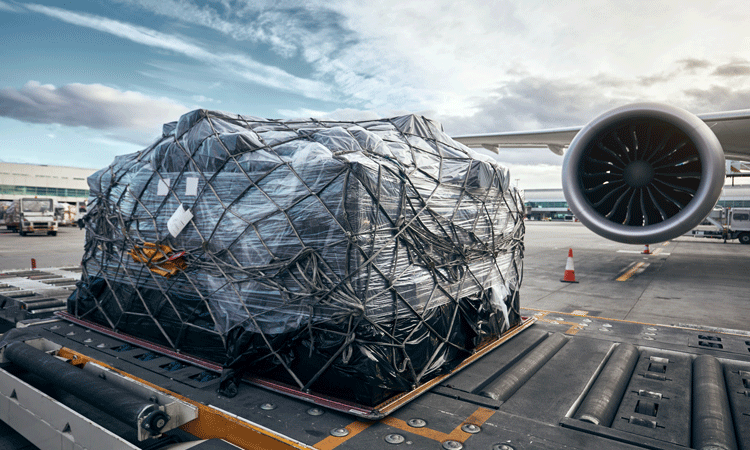Voice of the Industry: The International Air Cargo Association
Posted: 19 July 2024 | Glyn Hughes | No comments yet
The International Air Cargo Association’s (TIACA) Director General, Glyn Hughes, wrote exclusively for International Airport Review, on what he predicts will happen to air cargo throughout 2024, drawing upon analysis and the current challenges that the sector is facing.


Air cargo outlook: More turbulence or smooth air? What will 2024 bring?
With 2023 ended, we reflect on another year where turbulence and disruption were the prevailing conditions. Although the year finished on a buoyant note with volumes rebounding quite significantly in comparison with December 2022, was this a one-off blip or an indication of a more positive year ahead?
Let us examine some of the conditions expected to influence the air cargo industry throughout 2024.
There are many areas of influence including capacity, demand, supply chain disruptions, macroeconomics, and geo‑politics.
Capacity
2023 could be termed “the return of the belly” as soaring passenger demand saw significant growth in passenger network resumption which resulted in belly cargo capacity recovering to 2019, i.e. pre-COVID-19, levels. Coupled with production freighter deliveries and a steady stream of conversions, the year ended with an increase in overall capacity versus the prior year.
As we head into 2024, we can anticipate further production and conversion deliveries scheduled for the year, so with demand expected to increase, but at low single digit levels, we can foresee some retirements of older aircraft. This is to try to maintain a more equitable balance between capacity supply and demand.
Demand
Without a doubt, the last three years have seen significant positive contribution arising from the steady rise in global ecommerce demand. Every region reported growth, fueled by ultra-fast fashion, millennial and Gen Z shopping trends and a proliferation of new retail online platforms, such as TEMU, SHEIN and TikTok Shops. This is alongside growth from traditional platforms such as Amazon, Mercado Libre, eBay, Alibaba, AliExpress and others, which are premised on expeditated deliveries.
We expect this global growth to continue throughout the upcoming year. Additionally, smartphones and other high-tech products have shown subdued sales over the past year, and we can therefore expect replacement cycles – perhaps benefitting from a boost in volumes by the second half.
Vehicle production is also expected to show growth as compared to 2023 so orders for auto components and high spec chips for which air is the primary mode of transport are expected to increase consequentially. Pharmaceutical shipments are also expected to show continued steady growth as the global health care sector relies on fast, efficient, and quality supply chains. Product integrity is crucial and with the issues related to the red sea shipping lanes impacting European drug stocks, we can expect to see air cargo continue to play a pivotal role in supply chain fulfilment.
Supply chain disruption
Three significant situations affecting global supply chains are the continued drought conditions impacting the Panama Canal; the threats of attack on ships using the Red Sea on route to the Suez Canal and the continued impact of Russia’s invasion of Ukraine.
Normally, the Panama Canal would support about 36 daily passages, but due to low water levels in feeding reservoirs, the number of passages has been restricted to 24 and this is expected to continue until April or May, when spring rains are expected. The passage restrictions have also resulted in increased fees as well as alternative, more lengthy distribution chains being required.
The Red Sea attacks unfortunately show no signs of abating, despite military action by the U.S. and others targeting the capabilities of those launching attacks on commercial shipping vessels. Thus far, over 55 separate incidents have been reported. To avoid the area, ships have been rerouted to sail around Africa, adding up to three weeks of journey time and significant additional cost in terms of fuel and surcharges. Container shortages are also becoming a factor because of the extended outward and return journeys.
The war in Ukraine has been impacting air cargo trade lanes for two years as sanctions and reprisals have closed Russian airspace to many operators. This has added up to three hours to journey times, increased fuel burn, has added crew costs and often necessitated intermediary stopping points to / from Europe and the far east. Sadly, this conflict shows no signs of concluding soon.


Macro economics
The past two years have seen energy costs rising across most economies and subsequent inflation levels exceeded most central bank targets. Central banks then resorted to raising interest rates designed to slow economic activity and consequentially, consumers had to direct additional funds away from discretionary purchases to cover the rising domestic household bills. This subdued consumer activity resulted in high inventory levels and therefore reduced demand for air cargo based restocking supply chains.
With inflation showing significant reductions versus their peak levels during 2023 there is a strong expectation that central banks will start lowering central interest rates during the second half of the year. This should lower housing costs and coupled with historically high wage increases agreed in many sectors, we could see strong consumer activity towards Q3 and Q4.
Geo-political tensions
During 2024, nearly half of the world’s population will be involved in general elections, with the U.S. and India being two of the largest economies going to the polls.
Analysts will be watching closely as there is a risk of increased policies related to economic protectionism, potential for friend shoring or supply chain de-risking through multi-site production and manufacturing. Any associated economic policy changes may have an impact on supply chains.
Tensions in the Middle East continue to be very delicate and there remains a risk that the situation in Israel and Gaza could escalate.
Conclusion
Overall, we go into 2024 with cautious optimism that the challenging conditions of 2023 are starting to lessen. We anticipate recovering consumer activity in the second half of the year and strong ecommerce growth from the outset. Capacity and demand will require delicate balancing to ensure yields do not continue the drop experienced throughout 2023, although its important to note that yields remain above 2019 levels.


Join our free webinar: Transforming Airport Security – Innovation, Impact, and the Passenger Experience
The landscape of airport security is undergoing a profound transformation, driven by evolving threats, technology, and passenger expectations. This webinar focuses on how AtkinsRéalis has been transforming security processes at some of the world’s busiest airports with smarter, more adaptive solutions.
Date: 4 Nov | Time: 14:00 GMT
REGISTER NOW TO SECURE YOUR SPOT
Can’t attend live? No worries – register to receive the recording post-event.

















